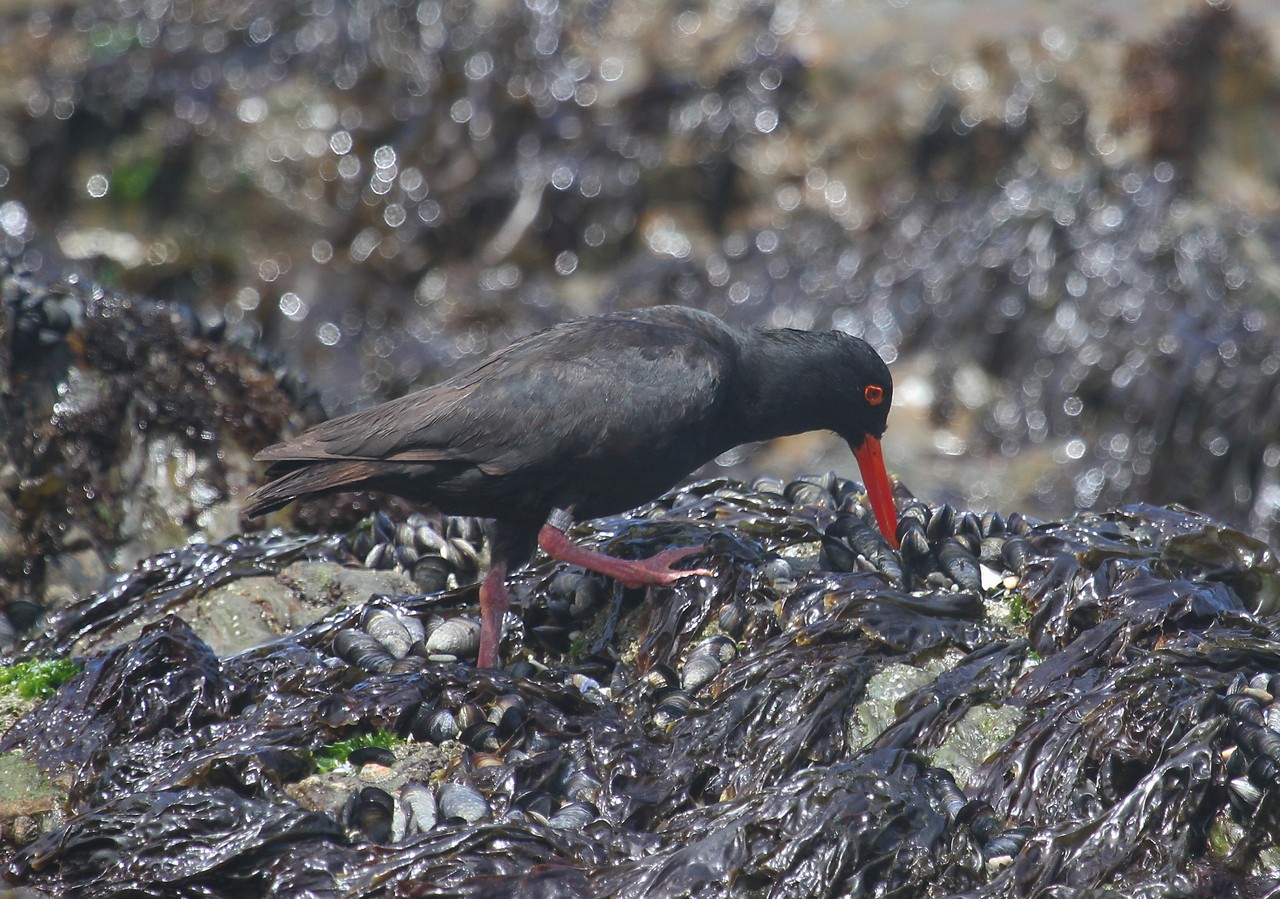African Oystercatcher
A species of Oystercatchers, Also known as Black Oystercatcher Scientific name : Haematopus moquini Genus : Oystercatchers
African Oystercatcher, A species of Oystercatchers
Also known as:
Black Oystercatcher
Botanical name: Haematopus moquini
Genus: Oystercatchers
Content
Description General Info
Description
The African oystercatcher is a large, noisy wader, with completely black plumage, red legs and a strong broad red bill. The sexes are similar in appearance, however, females are larger and have a slightly longer beak than males. Juveniles have soft grey plumage and do not express the characteristic red legs and beak until after they fledged. The call is a distinctive loud piping, very similar to Eurasian oystercatchers. As the Eurasian oystercatcher is a migratory species they only occur as a vagrant in southern Africa, and its black-and-white plumage makes confusion impossible. 
Size
45 cm
Nest Placement
Ground
Feeding Habits
African Oystercatcher primarily consume mollusks like mussels and limpets, displaying adaptability by foraging for polychaetes, insects, and fish. They use specialized techniques to pry and loosen prey from rocks and sift through sand for additional nourishment.
Habitat
African Oystercatcher predominantly inhabits coastal regions, thriving along rocky shores and sandy beaches which provide ample feeding opportunities. These areas, often adjacent to estuaries and coastal lagoons, also serve as preferred breeding grounds. Broadly distributed across the Southern African mainland coasts and offshore islands, african Oystercatcher shows a marked preference for environments abundant with marine invertebrates. Despite this coastal association, african Oystercatcher is known to be less common in estuaries compared to its affinity for more open marine habitats.
Dite type
Aquatic invertebrate eater
General Info
Feeding Habits
Bird food type
Distribution Area
The African oystercatcher is native to the mainland coasts and offshore islands of Southern Africa sometimes occurring as a vagrant in Angola and Mozambique. Its breeding range extends from Lüderitz, Namibia to Mazeppa Bay, Eastern Cape, South Africa. There are estimated to be over 6,000 adult birds in total. Typically sedentary African oystercatchers rarely leave their territories, which include a nesting site and feeding grounds. These will usually be located on or near rocky shores where they can feed. 
Species Status
Not globally threatened.
Scientific Classification
Phylum
Chordates Class
Birds Order
Shorebirds Family
Oystercatchers Genus
Oystercatchers Species
African Oystercatcher 